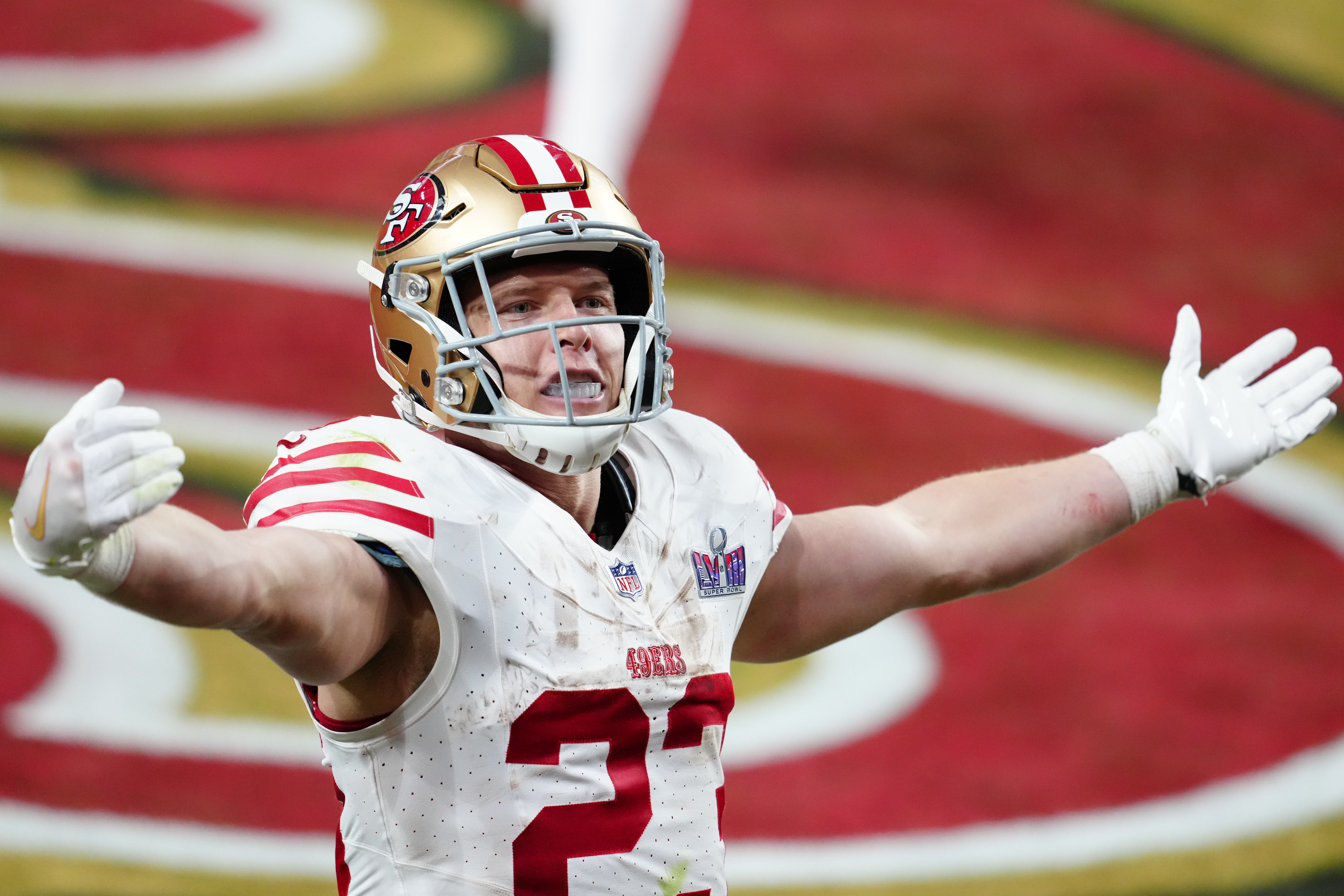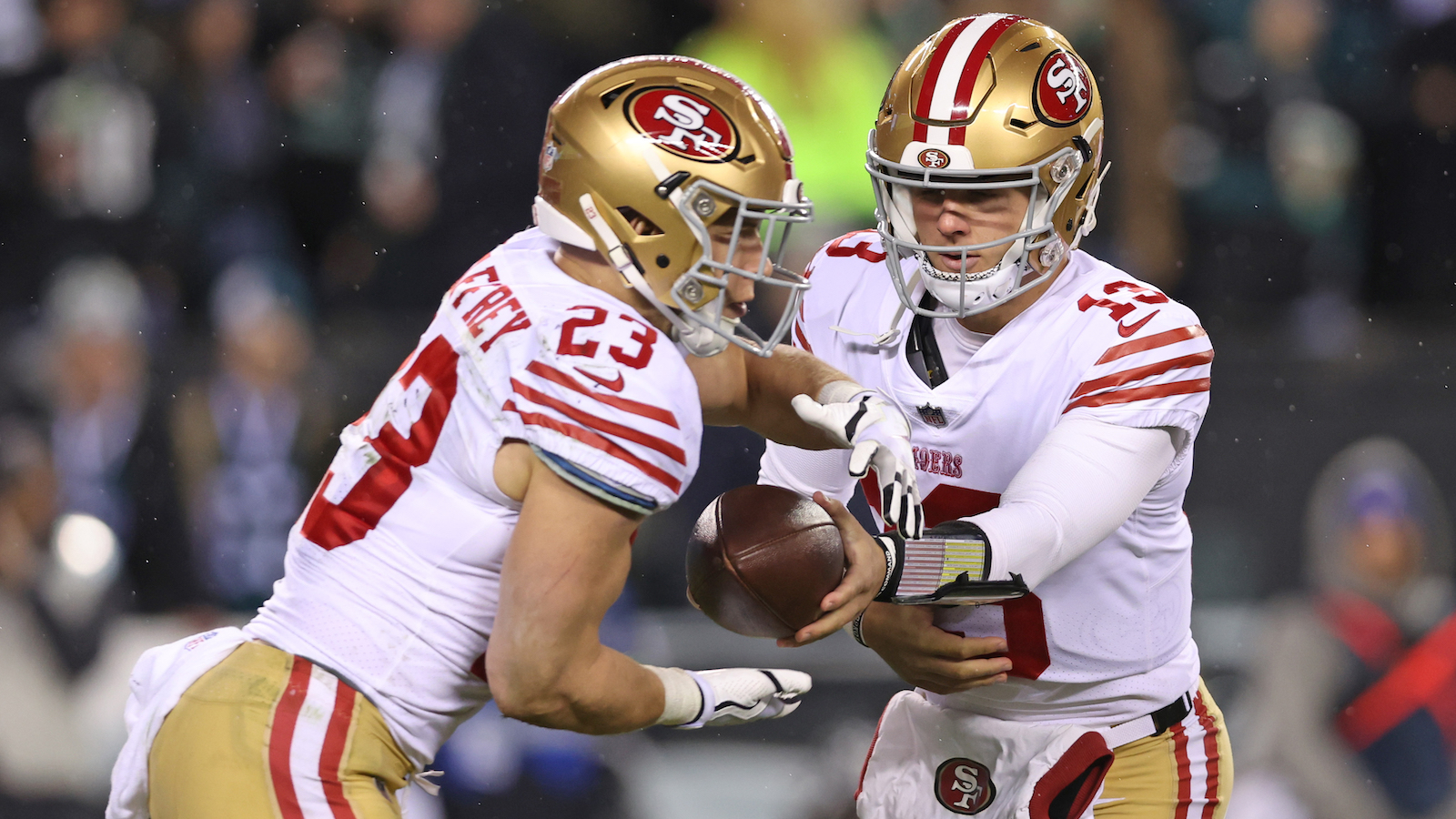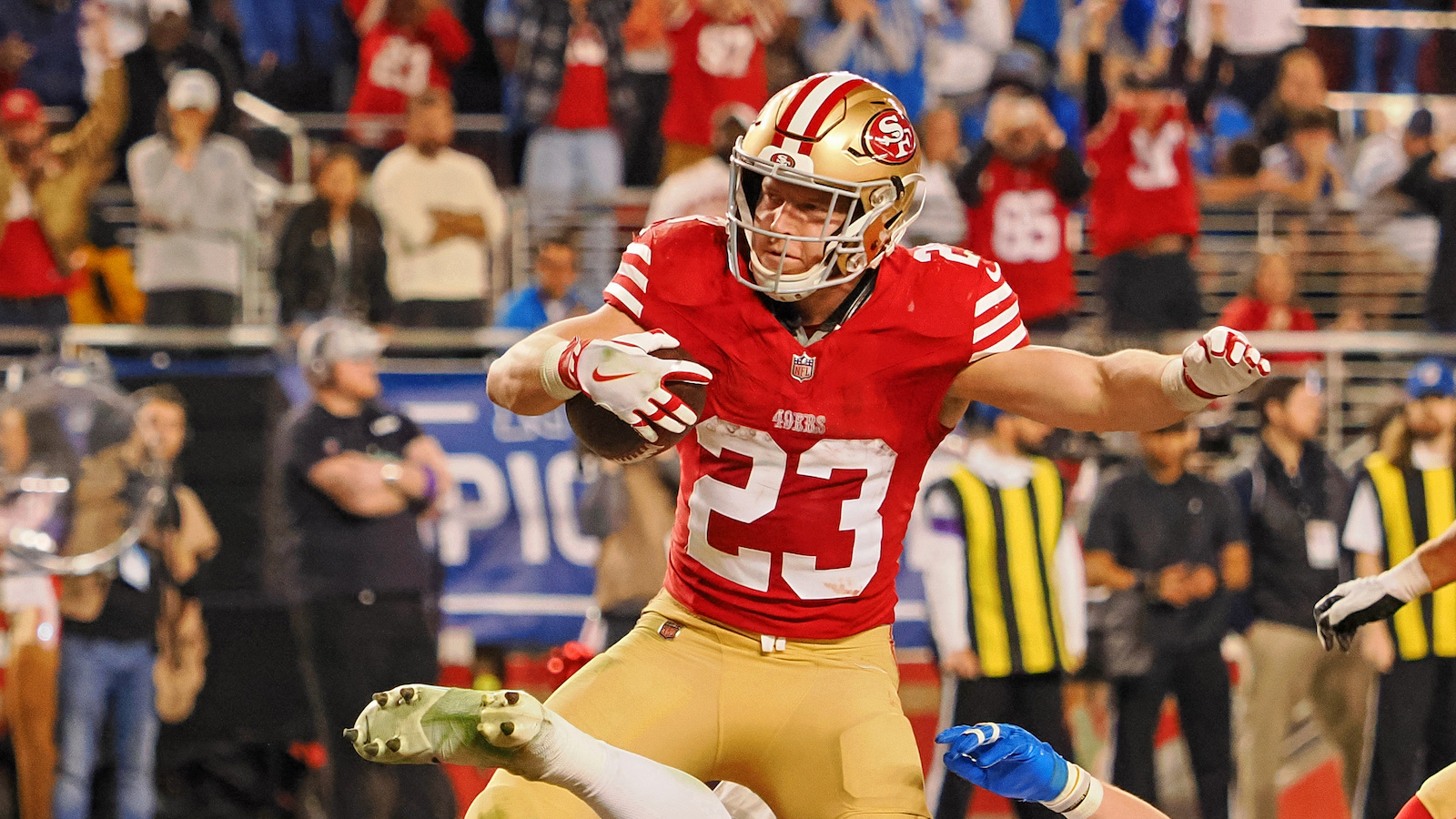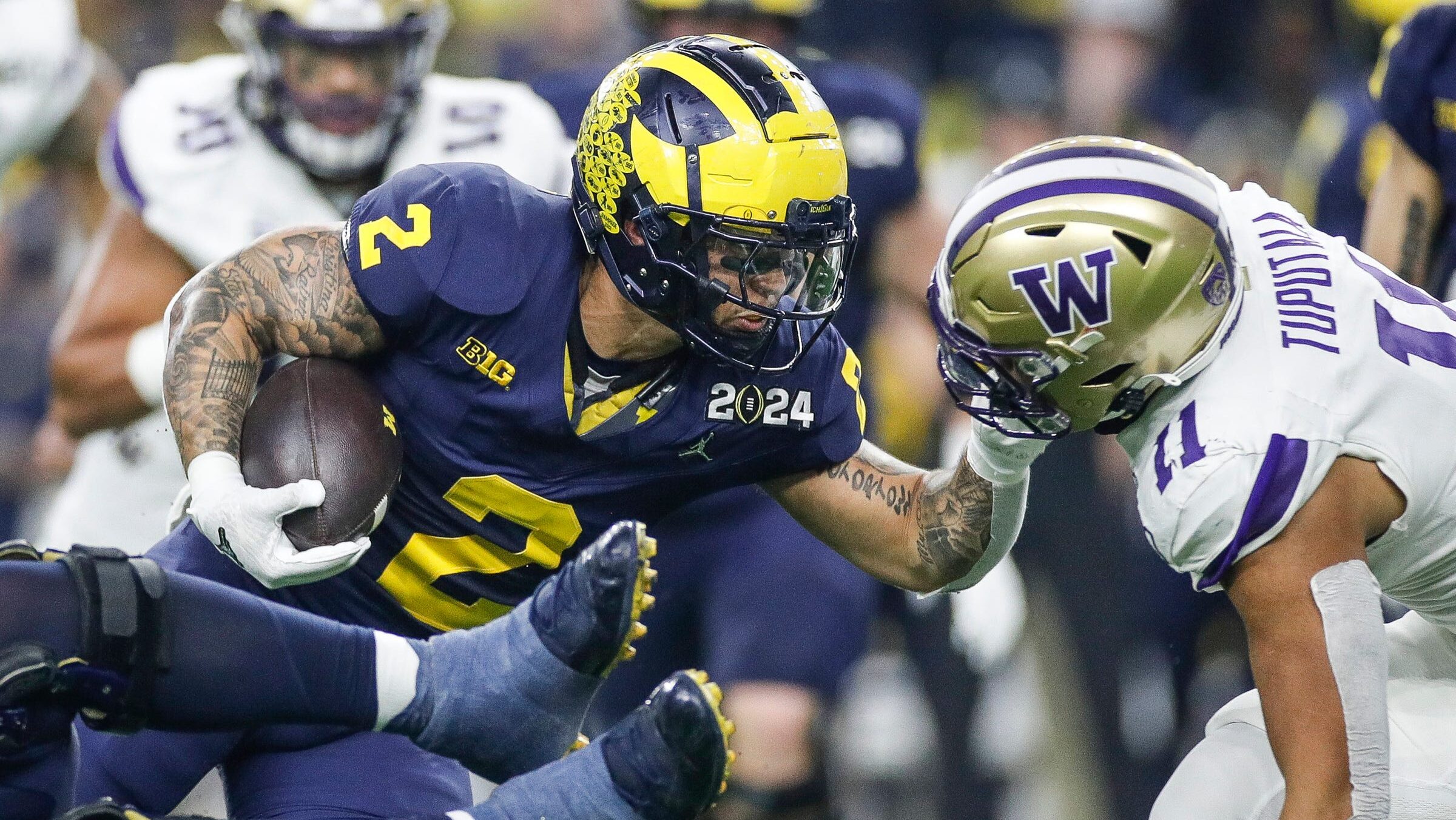Fantasy
11/18/23
8 min read
How To Handle Week 11 Chalk in DFS
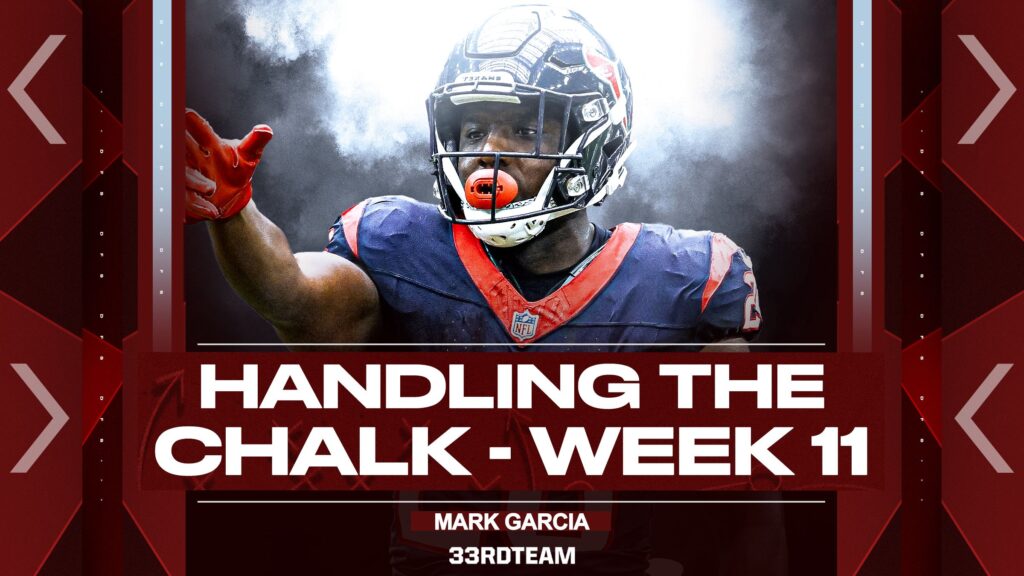
It's common for DFS players to key in on the same expected top plays each week, or 'chalk plays' if you will. We'll look at the expected chalk plays with tips and best practices to improve your roster construction each week.
We’ll also explore theoretical and conceptual areas of roster construction in DFS as we examine various pieces of chalk throughout the season, with the goal to grow as players along the way. Numerous tips, or best practices, will emerge from this exploration. With that, and in our best Bruce Buffer voice, it’s time!
Week 11 Chalk
 Trey McBride, Arizona Cardinals
Trey McBride, Arizona Cardinals
Trey McBride is expected to garner the top overall ownership on the slate for the third consecutive week. He has held one of the most valuable tight ends roles in the absence of Zach Ertz, seeing 28 targets and putting up 248 yards on 21 receptions and scoring once across three starts.
The matchup is a solid one against the zone-heavy Houston Texans defense. McBride has also been the team’s most valuable pass-catcher against zone coverage this season from an underlying metrics standpoint.
On the other hand, we must realize this is still a second-year tight end seeing only his second NFL action with his current starting quarterback, and Kyler Murray has historically held miniscule tight end target rates throughout his career.
 Devin Singletary, Houston Texans
Devin Singletary, Houston Texans
Devin Singletary has held an elite role in the absence of Dameon Pierce, playing 75 percent or more of the offensive snaps in each game since Week 9. I talked a lot about the return to health of Laremy Tunsil this week and how that has opened up the run game for Bobby Slowik and the Texans.
Even so, Singletary now has four career games with more than 100 yards rushing across five professional seasons and will need 100 yards and multiple touchdowns to sink you for not playing him at massive ownership.
 Tank Dell, Houston Texans
Tank Dell, Houston Texans
Tank Dell leads the Texans in most predictive receiving metrics this season, falling just short of Nico Collins in only fantasy points per route run against zone coverage. For all intents and purposes, Dell is the WR1 on this team.
That said, the Texans have held all pass-catchers to sub-elite snap and route participation rates this season, leaving Dell in a route on just 77.7 percent of the team’s pass plays this season. A solid 13.8 aDOT and elite efficiency has made up for the modest route rates to this point in the season.
Consider Dell a fine play at salary, albeit coming with some interesting potential leverage angles considering the high expected ownership.
 Brian Robinson, Washington Commanders
Brian Robinson, Washington Commanders
Fun fact: Brian Robinson Jr. is the only running back to have multiple RB1 overall finishes this season. That surprised me in my research this week. Antonio Gibson is now out for the Washington Commanders for a matchup against the struggling New York Giants defense.
The idea here is that some of Gibson’s receiving usage will trickle down to Robinson, which would reduce the requirement to score multiple touchdowns to return a viable GPP score. Consider Robinson an extremely solid on-paper play this week.
 Evan Engram, Jacksonville Jaguars
Evan Engram, Jacksonville Jaguars
Evan Engram has one of the most consistent roles among tight ends in the league, seeing seven to 10 targets in all but one game this season.
That said, he has a miniscule 8.7 percent red zone target share and faces off against a Tennessee Titans defense allowing just 7.9 fantasy points per game to opposing tight ends while being the only team in the league yet to allow a receiving touchdown to the position.
 Rondale Moore, Arizona Cardinals
Rondale Moore, Arizona Cardinals
Do we really want to play a slot wide receiver with a 67.0 percent snap rate, 84.3 percent route participation rate and 3.3 aDOT at 20 percent ownership this week? Rondale Moore has a laughably low 0.64 yards per route run this year, which ranks 97th in the league. Moore’s inflated expected ownership is telling of the lack of projectable value on this slate.
Perceived Certainty
If you add up the composite ownership on skill position players for every team playing on the Week 11 main slate, you’ll see that almost 90 percent of rosters in play this week are expected to include a member of the Cardinals, and almost 60 percent are expected to include a member of the Texans.
In other words, expect someone from the Cardinals or Texans to be on nearly every roster in play this week, with significant overlap present from those two teams. And I get it, the Cardinals are cheap and have Murray back under center in a game with a solid 48.0 game total.
That said, the Cardinals carry a Las Vegas-implied team total of just 21.0 points. For comparison, the Green Bay Packers are implied for 20.5 points in a game with a 44.0-point game total and have pass-catchers that are all priced at $5,200 or cheaper on DraftKings.
If we played out this slate 100 times (or simulated it infinitely), the Packers would score more points than the Cardinals in 49 (or 49 percent) of them if we take the median outcome (Las Vegas-implied team total) at face value. So, where is this perceived certainty from the field coming from? Why are we so certain that McBride, Moore, Marquise Brown and Michael Wilson are better plays than Christian Watson, Romeo Doubs, Jayden Reed and Luke Musgrave? Narrator: they’re not (well, outside of McBride).
Or what about the Buffalo Bills, who are implied for a team total of 23.25 points? Are they incapable of scoring four touchdowns against the New York Jets? Their Las Vegas-implied team total says they will score four touchdowns (28 points) just over 20 percent of the time if we played out this slate infinitely.
Josh Allen and Stefon Diggs are expected to be on fewer than one percent of the rosters in play this week. Again, where is this perceived certainty that the Bills will fail this week coming from?
What if the restrictor plates come off for Allen with Ken Dorsey no longer in town? From a macro perspective, this slate is ripe with the potential to generate leverage smartly.
Teams That Score Points Are Good For DFS
I know, I know, obvious, right? Except the field is almost completely neglecting four of the five teams with Las Vegas-implied team totals greater than 26.0 points, outside of only one player. We’re seeing mega-chalk develop in the Cardinals-Texans game, where the Texans have surged to a 27.0 implied team total.
Even then, the Cardinals are projected for the top composite ownership on the slate at over 90 percent. And yet, outside of Tyreek Hill in Miami, players from the Miami Dolphins (30.0), Detroit Lions (27.75), San Francisco 49ers (27.0) and Dallas Cowboys (26.5) are going largely overlooked.
Pricing psychology, or the psychological aspects of assigning and ranking players via salary, comes into play in this discussion as most of the players from those teams are priced at elite and sub-elite levels.
When you combine that thought with the general lack of projectable value (remember, I define projectable value as players priced below $5,000 that carry solid point-per-dollar median projections), it becomes harder to build around the players priced up on the slate.
That said, the low median game total on the Week 11 main slate and relatively wide game spreads means elite raw projections are harder to come by, which results in more balanced builds as far as roster construction tendencies from the field are concerned.
That theoretically increases the importance of raw points, with the players from the aforementioned teams providing the highest likelihood of reaching elite DFS scoring on this slate.
That theoretical thought process leads to an increased emphasis on players like Tony Pollard, Jake Ferguson, Raheem Mostert, Jaylen Waddle, Brandon Aiyuk, George Kittle, Deebo Samuel, Jahmyr Gibbs, Amon-Ra St. Brown and Sam LaPorta.
Remember, the goal in DFS is to maximize ceiling while minimizing the variables. We can reduce a number of variables by placing an increased emphasis on players from teams expected to score points, particularly when those players also come with low expected ownership.
This process spells out the most optimal way of generating leverage, which goes far beyond simply discussing player names and individual micro matchups.
That will do it for our Week 11 exploration of chalk and some theoretical and conceptual takeaways. We’ll be running this series every week of the 2023 season, picking out new learning points with each week. I welcome all feedback with this new column, so please don’t hesitate to reach out to let me know things you like or things I could do better.
Follow The 33rd Team Podcast Network on Spotify and Apple Podcasts.


